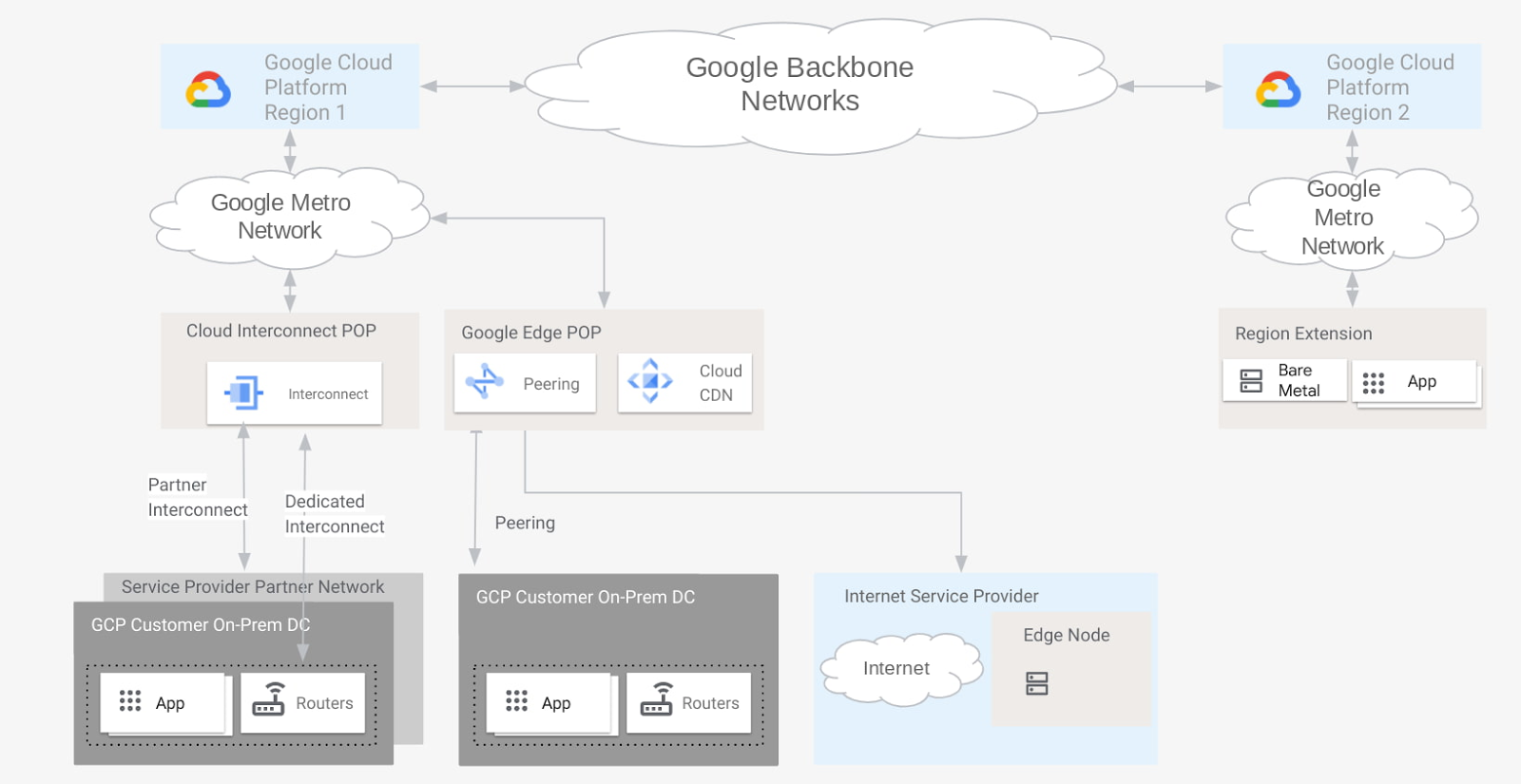Google is dedicated to building infrastructure that lets you modernize and run your workloads, and connect with more users, no matter where they are in the world. Part of this infrastructure is our extensive global network, which provides best-in-class connectivity to Google Cloud customers, and our edge network, which lets you connect with ISPs and end customers.
When it comes to choosing how you connect to Google Cloud, we provide a variety of flexible options that optimize performance and cost. But when it comes to the Google network edge, what constitutes an edge point? Depending on your requirements and connectivity preferences, your organization may view different demarcation points in our network as the “edge,” each of which performs traffic handoffs in their own way. For example, a telco customer might consider the edge to be where Google Global Caches (GGC) are located, rather than an edge point of presence (POP) where peering occurs.
In this blog post, we describe the various network points of presence within our edge, how they connect to Google Cloud, and how traffic handoffs occur. Armed with this information, you can make a more informed decision about how best to connect to Google Cloud.
#hybrid & multi-cloud #google cloud platform #networking #cloud

